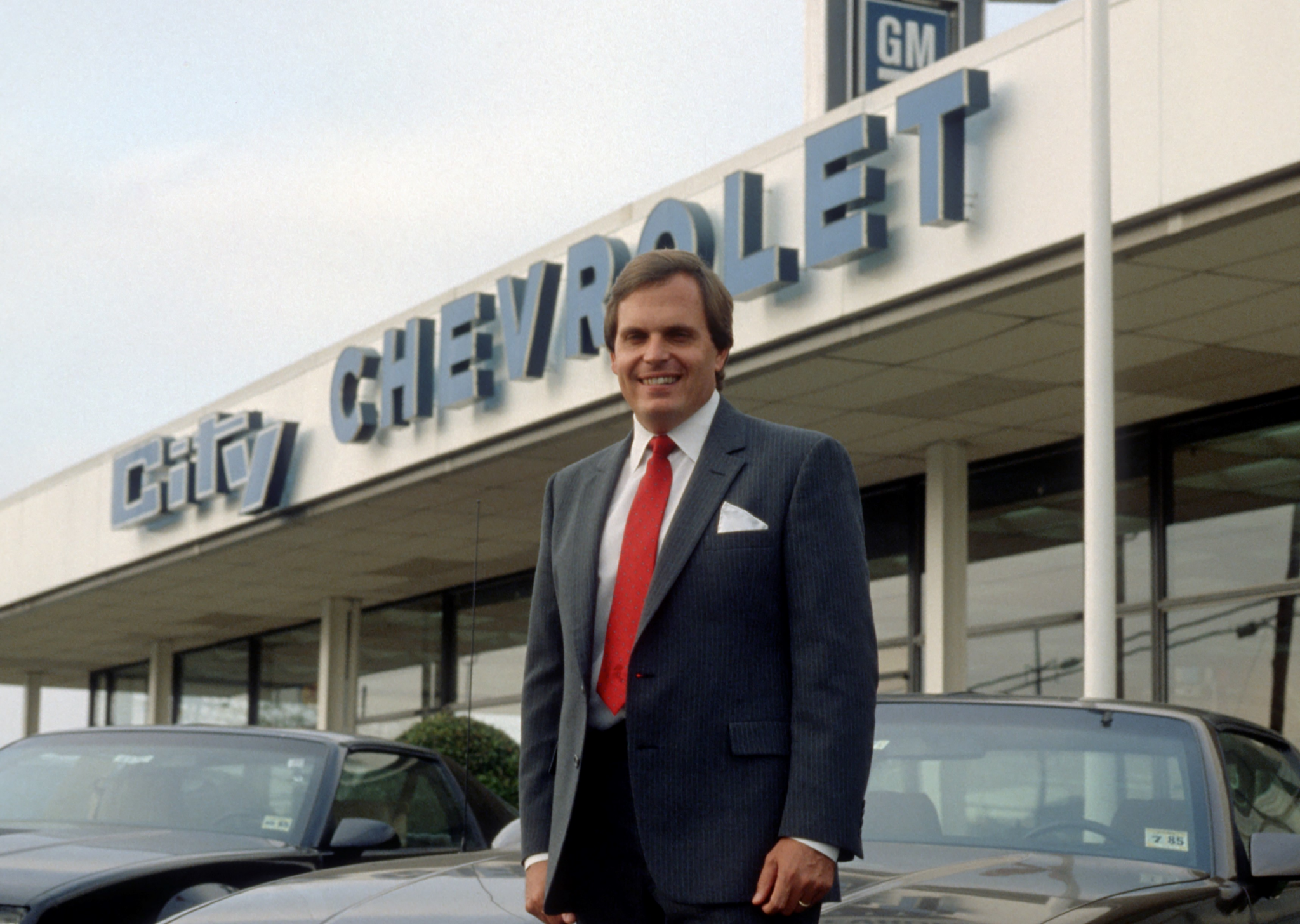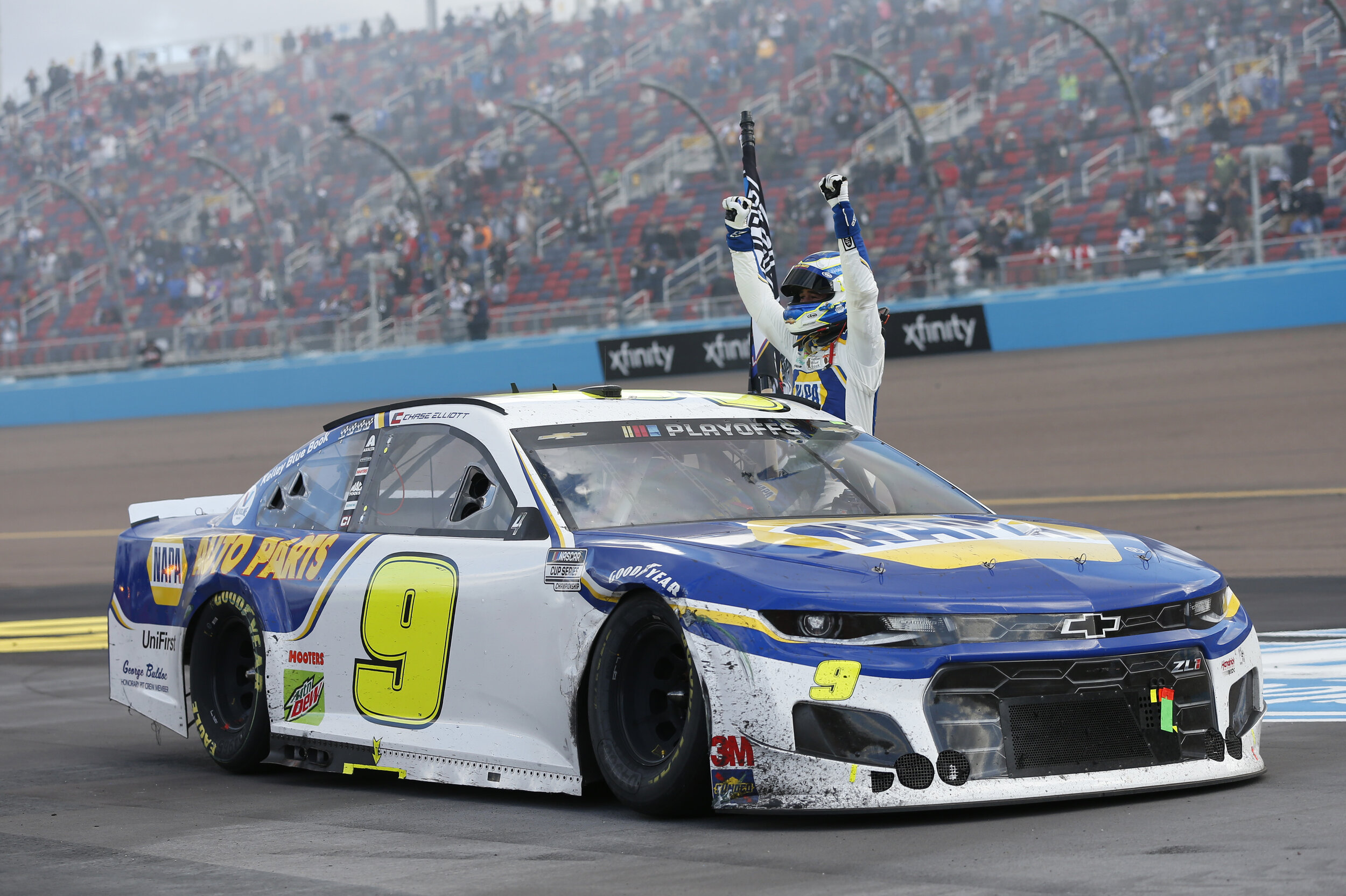
Rick Hendrick is a racer before anything else. Since his youth in South Hill, Virginia where he modified and drag raced his first car – a 1931 Chevrolet he owns to this day, Rick Hendrick has always liked to go fast. A skilled racer himself, he has also dabbled in road racing, is an accomplished drag boat pilot, and even competed in his own NASCAR stock cars on a select few occasions.

In 1975, Chevrolet appointed 25-year-old Rick Hendrick to take the reins of a struggling dealership in Bennetsville, SC – making him the youngest Chevrolet dealer in history. Great success came quickly and he was awarded the opportunity to acquire his flagship dealership: City Chevrolet in Charlotte, NC. Today, Hendrick Automotive Group is the largest privately held automotive dealership network in America with over 140 franchises across the country.

In 1983, Hendrick met legendary crew chief Harry Hyde – a man who just needed a chance to show the world he still had a few tricks up his sleeve. Just months later, a shiny new red & white No. 5 Chevrolet Monte Carlo showed up for Daytona Speedweeks in February 1984. With Harry handling the wrenches and a hungry Geoff Bodine behind the wheel, the new team impressed everyone and won in their eighth start, coincidentally at Hendrick’s home track in Martinsville, Virginia. Since then, the Hendrick Motorsports story has been one of triumph and tragedy, rewriting the history books every step of the way.

In addition to Bodine, who won the team’s first Daytona 500 in 1986, the decade was highlighted by success from the meteoric Tim Richmond and NASCAR Hall of Famer Darrell Waltrip, who won the team’s second Daytona 500 in 1989. Though Richmond only wheeled Hendrick cars in 37 races beginning in 1986 before being permanently sidelined by illness in 1987, the brash rocketship won nine races and set Hendrick on a course for the stars. His astonishing winning percentage of 24% still holds the record among Hendrick drivers.

The 1990’s saw the emergence of a California kid they called “Wonder Boy,” who alongside a wise Texas veteran known as the “Ice Man” elevated Hendrick Motorsports from race winners to champions. The 1994 season would set the stage for an unprecedented string of championships to follow. Terry Labonte won three races in his new role as driver of the No. 5 Chevrolet, while Jeff Gordon captured his first two career wins on the biggest stages in the sport – the second of which being one of the biggest moments in NASCAR history.

With few exceptions dating back to 1911, the Indianapolis Motor Speedway held only one race annually: “The Indianapolis 500.” The fraternity of “The Speedway” prided themselves in solely hosting “The Greatest Spectacle in Racing,” and outsiders were not welcomed with open arms. But as NASCAR reached unprecedented heights, even the hallowed grounds of “The Racing Capital of the World” couldn’t resist the gladiatorial stock cars and the show they put on. The largest crowd in NASCAR history poured through the gates on August 6, 1994 for the Inaugural Brickyard 400, well in excess of a quarter of a million strong. Brimmed with 160 laps of intense drama, an adopted son of Indiana triumphed in the instant classic – and a young Jeff Gordon’s life was changed forever.

1995 was the dawn of a dynasty as Jeff Gordon captured the organization’s first championship on the back of seven wins that season. The following year he would win an astonishing ten races to Terry Labonte’s two, only to fall short in the championship end game to the newly anointed “Ironman” of NASCAR as Labonte earned the team’s second Cup title. Gordon would win ten races yet again in 1997, and this time he’d seal the deal and hoist the championship trophy again at season’s end.

All was not well at Hendrick Motorsports, however. After being diagnosed with leukemia in late 1996, Rick Hendrick handed the reigns of Motorsports over to the capable hands of his brother John. Perhaps the highlight of the 1997 championship season transpired at its outset when Jeff Gordon led teammates Terry Labonte and Ricky Craven to a 1-2-3 finish in the Daytona 500 – the first time a team had ever done so. As their beloved owner fought for his life back home, they held up a sign in victory lane which read, “Rick, this one’s for you.”

As if 10 wins in 1997 wasn’t enough, Jeff Gordon’s 1998 season would go down as the most dominant in the modern era of NASCAR. His No. 24 Dupont “Rainbow Warriors” team, led by NASCAR Hall of Fame crew chief Ray Evernham, would win 13 of the 33 races and the organization’s contemporary record fourth-straight NASCAR Winston Cup championship.

The new millennium brought a crop of new talent to Hendrick Motorsports and a new look for the No. 24 Chevrolet, who would again reign supreme. Now adorned with flames as iconic as its old rainbow scheme, Jeff Gordon would capture his fourth and final Cup title in 2001, highlighted by earning Hendrick Motorsports their 100th Cup win at Michigan in June and a third win at the Brickyard. But perhaps Gordon’s biggest accomplishment that season was the orchestration of the addition of a fourth car to the Hendrick stable, driven by a fellow Californian – an off-road racer who was So-Cal cool and just wanted to win a race: Jimmie Johnson.

The 2004 20th Anniversary season for Hendrick Motorsports would see the most trips to victory lane since 1998 – led by a series-high eight wins for Jimmie Johnson. But despite all the success, it was a year mired by unimaginable tragedy. Three months after the loss of the Hendrick patriarch, Papa Joe, a small plane carrying ten members of the Hendrick Motorsports family crashed en-route to a race at Martinsville in late October. There were no survivors. Unaware of the events that would change the company forever, the teams raced on at the Virginia short track and Jimmie Johnson captured his second straight victory that day. After a week of mourning, Johnson would do the impossible. With “ten angels riding on his racecar” the next week at Atlanta, he would take his third-straight checkered flag and provide the hundreds of people at Hendrick Motorsports a moment of relief and a chance to smile and remember their lost colleagues.

The most successful organizations are led by inspiration and strength from the top, and Hendrick Motorsports is a shining example. Facing unimaginable grief, Rick Hendrick led his team out of their darkest days and turned their loss into motivation to “go out and take it to the world.” After Johnson and Gordon barely missed out on the 2004 and 2005 titles, Johnson and the No. 48 team were determined to own the 2006 season from start to finish. They started off on the right foot, winning Hendrick’s second straight Daytona 500, succeeding Gordon’s 2005 triumph. Johnson would go on to kiss the bricks at Indy en-route to his first Cup Series crown at season’s end.

Nobody knew what to expect when NASCAR introduced the evolutionary “Car of Tomorrow” in 2007, but Hendrick Motorsports came loaded for bear. Jimmie Johnson kicked off a year of domination by winning the organization’s 150th Cup race at Las Vegas. Johnson would win a total of ten races on his way to a second consecutive championship. After surpassing the late Dale Earnhardt for sixth on the all-time wins list, Jeff Gordon would finish the season nipping on Johnson’s heels with six wins of his own. Teammates Kyle Busch and Casey Mears also added a pair of wins to bring the total count to 18 wins from 36 races: then an unmatched accomplishment in the modern era of NASCAR.

Through 2010, the No. 48 team continued to obliterate records – winning a benchmark five-consecutive championships. In 2008, Dale Earnhardt, Jr. joined the fold and won in his first outing driving for Hendrick in the Budweiser Shootout at Daytona, becoming the second Earnhardt to do so after his legendary father drove the first stock car Rick Hendrick held ownership stake in to a Busch Series victory at Charlotte in 1983. Hall of Fame driver Mark Martin came out of semi-retirement in 2009 and set the world on fire with five victories, trailing Johnson and besting Gordon for an unprecedented Hendrick 1-2-3 in the final point standings to cap off the organization's 25th Anniversary season.

The 2012 season began with a string of agonizing near misses as the team pursued Cup win number 200. Finally, the floodgates burst open at Darlington in May when Jimmie Johnson notched the historic milestone – making Hendrick only the second team in Cup series history to eclipse the double century mark. Over the next few weeks, Hendrick Motorsports won everything possible. The No. 48 team won the Pit Crew Competition and the All-Star race, Kasey Kahne won his first race in a Hendrick Chevy in the Coca-Cola 600 endurance classic, followed another bread and butter No. 48 win at Dover. Two races later, Dale Earnhardt, Jr. snapped a long winless drought at Michigan before Jimmie Johnson equaled Jeff Gordon’s record four wins at Indianapolis Motor Speedway later in the year. The following February, Johnson led Earnhardt, Jr. to a Hendrick 1-2 in the 2013 Daytona 500 en-route to his sixth championship in November. Meanwhile, Gordon retook the top honors at Indy with his record fifth Brickyard 400 victory.

Seven is the holiest number in NASCAR. It’s the towering championship benchmark set by the sport’s two biggest heroes, the larger than life figures known as “The King” and “The Intimidator.” Many believed Richard Petty and Dale Earnhardt’s seven NASCAR championships would never be equaled, but the man who earned the nickname “Superman” had other ideas. After matching and surpassing Earnhardt’s hallowed 76 career wins early in 2016, including a signature victory at his home track driving a Superman liveried car, Jimmie Johnson was in prime form to make a run for his own spot atop the NASCAR mountain. But it took 24 races to get back to victory lane, then the longest span of his career. Thanks to an emotional and impossible win in Martinsville, Johnson and crew were part the championship showdown in Miami. In a 400-mile snapshot of the whole season, Johnson and crew battled adversity all race long. In the closing laps, the seas parted and Johnson weaved his way around his crumbling competitors. With two laps to go and history on the line, Johnson miraculously took the race lead and held it to the checkers, catapulting himself into immortality.

A youth movement has since carried Hendrick Motorsports towards a bright future. The sport’s most popular driver, Dale Earnhardt, Jr., retired at the end of 2017 after winning nine races driving the No. 88 – highlighted by victory in the 2014 Daytona 500. The team’s original “franchise driver,” Jeff Gordon, raced for a championship for the final time in 2015 before hanging up the helmet. In 2020, as one great champion moved on from stock cars, another emerged within the walls of Hendrick Motorsports. In Jimmie Johnson’s final race in the No. 48 he made legendary, Chase Elliott captured his first career title at the same age a young Jeff Gordon earned his first 25 years prior.

Jeff Gordon is now a leader of the company he helped shape – helping cultivate the next era of champions. Along with Elliott, winners Alex Bowman and William Byron were joined by Kyle Larson in 2021, who would deliver “Mr. H” one of his greatest triumphs. Just weeks after Bowman led the quartet to the team’s first ever 1-2-3-4 finish at Dover, Larson piloted the company’s original No. 5 to victory in the Coca-Cola 600 – capturing win 269 for Hendrick Motorsports, now the winningest team in NASCAR history. Larson would go on to capture the series crown on the back of ten wins at season’s end.

Hendrick Motorsports’ celebratory 40th year kicked off with a record-matching ninth Daytona 500 triumph at the hands of William Byron, who also handed the organization their landmark 300th Cup Series victory the previous September in Texas. With the young quartet of Larson, Elliott, Byron and Bowman all reaching victory lane, the future has never looked brighter. But the more things change, the more they stay the same. The track where the team won its first race and is forever the most special, Martinsville, is their winningest track – 29 times, to be exact. And Rick Hendrick is still a racer, now proudly enshrined in the NASCAR Hall of Fame.

